“For You” tells us: And your strength is devastating in the face of all these odds/Remember how I kept you waiting when it was my turn to be the god?
I don’t know if it’s his age, my age, or the times, but “For You” was as remarkably resonant as a show opener as the anthems had been during past shows. It told those of us with a probably unhealthy love of the man that he had something special in store.
What followed was a gathering of what radio in the old days would call deep cuts, ten songs from his first two albums. I thought of my son, Joe, who loves those early albums, and I wished he could have been there with me. The band joined Springsteen for “Does This Bus Stop at 82nd Street?” Then “It’s Hard to Be a Saint in the City,” “Growin’Up” (with the requisite story), “Spirit in the Night,” “Lost in the Flood,” an extended and stunning “Kitty’s Back.” and “The E Street Shuffle,” prompted by a sign Springsteen plucked from the crowd.
There were a lot of signs. More than I’ve seen at other shows, Bruce gathered them, occasionally showing them to the band. On at least one curveball, “Save My Love,” an outtake from Darkness on the Edge of Town, guitarist Stevie Van Zandt seemed to be lost momentarily, caught by surprise. “Incident on 57th Street,” a song I don’t think I’ve heard live, followed. When keyboardist Roy Bittan played the final chords, you knew what was next, a treasured pairing of two songs live that are back-to-back on the album. We got “Rosalita,” in a rare early set position. Ok, so this night would be really different.
“Thunder Road” completed the paring and featured the first marriage proposal of my Springsteen shows. “This Jersey Guy Is Going to Propose to This Jersey Girl During Thunder Road” read the sign (or something like that) Bruce showed the crowd. He paused after the song to be sure she said yes.
Then it was a bunch of sign songs, “Pink Cadillac,” “Save My Love,” “Candy’s Room” and “She’s the One,” clearly an audible. Bruce could be seen on the big screen turning to Max and Stevie and mouthing the words to the title before the countdown.
“Factory” was a nod to Labor Day. It was slow, pensive, perfect.
“American Skin (41 Shots)” followed. It is one of his great unrecognized songs, a perfect poetic rendering of a tragedy from three points of view – a cop, a mother, and a dead man – inspired by a shooting in New York that unfortunately prophesied what was to come in this hard land.
I don’t think it’s an accident that he followed with my favorite song, “The Promised Land.” I’ve done my best to live the right way/I get up every morning and go to work each day/But your eyes go blind and your blood runs cold/Sometimes I feel so weak I just want to explode,” he sings.
Like so many of us, he’s downright worried about the divisions in our country and our world, but he still believes.
“Hungry Heart” appeared in an extended version with plenty of sing-along time. “Out in the Street” continued the trend. And then came “Mary’s Place,” that deceptive party song that’s about a wake. For me, a dearly departed friend – the late Mary Wasteneys, a longtime supporter of my North Shore Point House Concerts series – was there, dancing in spirit.
Springsteen walked into the crowd more than I’ve seen him do in the past. He seemed to need the connection, that personal connection, shaking hands, posing for selfies, letting fans – as he usually does – strum the guitar during “Born to Run.”
He also crowd surfed, although the Virginia Beach audience may need a little practice. It wasn’t clear they were going to get him all the way back to the stage. Jake Clemons, playing a sax solo, reached down to help him along.
“Because the Night” sounded more ferocious than usual and led into the fist-pumping “Badlands” and the return of “Land of Hope and Dreams” as a set closer.
The extended encore, as always, hit all the right notes. Instead of bringing one young girl on stage for “Dancing in the Dark,” Bruce brought an entire troupe, choosing them by the sign. One promised “no selfies.” She lied.
Springsteen seems to be having more fun as time grows short. He’s soon to be 67. He is a remarkable specimen and a remarkable mind. He’s a ponderer, willing to take you along into that deep dive on nights when you may be seeking escape. But he’s also the goofiest guy around, even at his age. During “Dancing,” he hugged and mugged, kissed all the girls, including a couple of pre-school kids wearing homemade “Bruce Springsteen for President, Born to Run,” shirts. If only.
We got “Tenth Avenue Freeze-out” and the lingering image of The Big Man, the late saxophonist Clarence Clemons, a Chesapeake native, on the big screen during the tribute. “Shout” went on and on and on and featured a new version of the cape revival with Van Zandt wrapping a cape with “The Boss” on the back as Springsteen staggered offstage, then mugged being choked and held back.
“Apparently, he’s become Soupy Sales,” Van Zandt commented before Bruce rose again to rock.
“Bobby Jean,” with its themes of friendship and parting could have been a message, but I don’t believe – I refuse to believe – this is the last time.
The band took a group bow and headed offstage. From my seat in the center, though, I could see a roadie hand Bruce an acoustic guitar. He was not done with us, not yet. He ended the evening as quietly and passionately as he began it, vulnerable.
“This Hard Land” seemed both a commentary and a reward for fans who handled the postponement. It’s a gem.
“We’ve been blown around from town to town/ looking for a place to land,” he sings. “Stay hard, stay hungry, stay alive/If you can/And meet me in a dream of this hard land.”
On the way out, I heard a young woman, maybe 25, talking to a friend about how she broke down during “For You” and how the early songs hit hard.
In the parking lot, a young man folded his blanket to put in the back of his car. His wife sat in the front, and a youngster huddled safely in a car seat. The man strode toward me. “Hey, we got a good one,” he said, raising his hand for a high five.
Yes, we did.


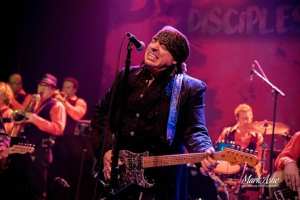
 Many years ago, I was having a drink at a party with a good friend of mine, a writer with a decade-long track record at places like GQ, Rolling Stone and other major magazines. Someone sidled up, introduced herself and — as people always do in New York — asked us what we did. We told her we were magazine writers. Well, she wondered, what was the most important talent for someone in the business?
Many years ago, I was having a drink at a party with a good friend of mine, a writer with a decade-long track record at places like GQ, Rolling Stone and other major magazines. Someone sidled up, introduced herself and — as people always do in New York — asked us what we did. We told her we were magazine writers. Well, she wondered, what was the most important talent for someone in the business?
 I’ve seen a remarkable number of writers who think getting assignments is all about marketing. Just find the right markets, get a few good contacts and you’ll have work. Well, at a certain level that may be true. There’s an endless demand for competent work. But never forget that the better a writer you become, the more editors will be calling.
I’ve seen a remarkable number of writers who think getting assignments is all about marketing. Just find the right markets, get a few good contacts and you’ll have work. Well, at a certain level that may be true. There’s an endless demand for competent work. But never forget that the better a writer you become, the more editors will be calling.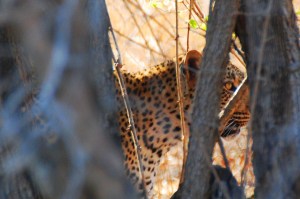
 So you’ve got an idea. Now what?
So you’ve got an idea. Now what? Send a reminder email a couple of weeks after you’ve sent a query to make sure the editor received it. Remind the editor of the query and tease with a one or two sentence description. This may seem depressing, but with new markets I’ve often found the editor never saw the query so always check in with the editor.
Send a reminder email a couple of weeks after you’ve sent a query to make sure the editor received it. Remind the editor of the query and tease with a one or two sentence description. This may seem depressing, but with new markets I’ve often found the editor never saw the query so always check in with the editor.
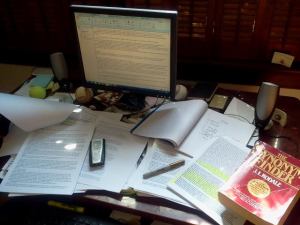 If you’re a beginner and don’t understand the basic rules of journalism including ethics then please take a course somewhere or go to the Society of Professional Journalists web site and download their ethical guidelines. I run into too many freelancers, usually people who have never been on staff, who are clueless about the basic rules of the game.
If you’re a beginner and don’t understand the basic rules of journalism including ethics then please take a course somewhere or go to the Society of Professional Journalists web site and download their ethical guidelines. I run into too many freelancers, usually people who have never been on staff, who are clueless about the basic rules of the game.
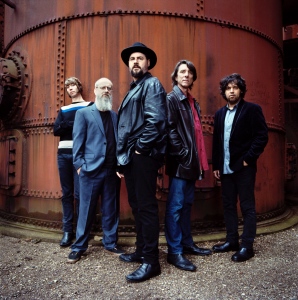

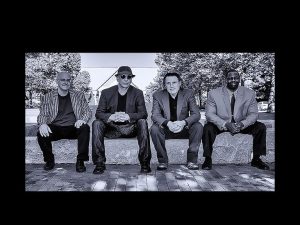 When Jae Sinnett first was asked if he’d be interested in playing a Christmas show, he said sure. A day later, he thought, “What did I get myself into?”
When Jae Sinnett first was asked if he’d be interested in playing a Christmas show, he said sure. A day later, he thought, “What did I get myself into?” 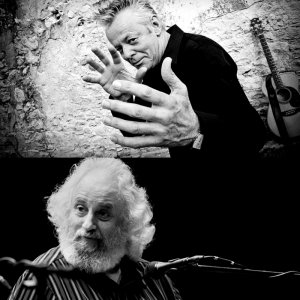 Tommy Emmanuel first came to Virginia by way of Nashville and longtime harp guitar player, Stephen Bennett who lived in Gloucester County for years.
Tommy Emmanuel first came to Virginia by way of Nashville and longtime harp guitar player, Stephen Bennett who lived in Gloucester County for years.